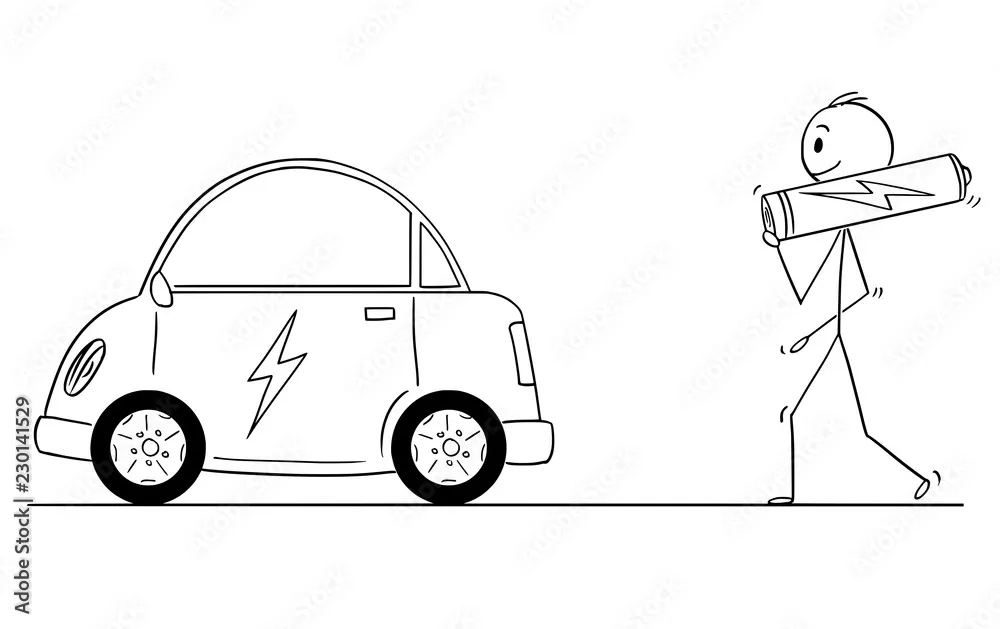By Harsha Kumar & Romit Mehta

EVs in India are poised for a take-off. The market is expected to grow at 90% annually to reach over $150B by 2030. Consider the growth. ~400,000 EVs were sold in India in FY22 which was a 200% jump compared to FY21 (~134,000 units). Even taking away the impact of COVID, this was a 150%+ jump coated to EV sales in FY20 (~170,000 units).
The 2W and 3W segments led the sales with over ~220,000 and ~175,000 units sold respectively. The industry is reaching a tipping point →50% of 3W now sold in India are electric. However, these sales are led by e-rickshaws with e-commercial vehicle (e-CVs) sales lagging significantly. For context, while over ~750k ICE commercial vehicles are sold annually in India ($5–7B market), only 2,200 e-CVs were sold in FY21. This despite, the clear TCO advantage for e-CVs which makes them an attractive option for fleet operators and aggregators. Simply put, the demand has been lukewarm.
Let’s delve into that deeper by understanding the current structure of the market.
Current Market Structure
CVs is a largely fragmented market. 80%+ of CVs (3Ws) are owned by driver cum owners (DCO) who travel 100–120 km daily. Being unorganized, they typically get financed at 18–24%, pay off the EMIs in 4 years and run the next few years on ‘profit’ before selling their vehicle further. In fact, the used vehicle market is a large part of the overall ecosystem in this segment. The e-CV market has not replicated this structure for a few reasons:
Lack of reliable charging infra

This is probably the biggest reason that has hindered EV adoption. There is simply lack of reliable and available infra for charging EVs. Since most of these vehicles are parked on the road, home charging is not a viable option. Drivers today have to often park their vehicles overnight in charging depots, incurring costs not just for charging but parking as well. This also means that a quick charge in the middle of the day is not an easily accessible or a budget-friendly option. This leads to EVs mostly being deployed on few corridors which have effective charging infra, limiting general use cases. This is among the key reason that despite 80%+ of the market being unorganized, the demand for EVs today largely stems from the organized segment.
Price parity with ICE vehicles

E-CVs are 50–80% more expensive than ICE CVs. Along with this, the battery life has remained unpredictable (failures, 3-year life) which caps the ‘usefulness’ of the vehicle in an operator’s mind.
Range anxiety
Current models often run for 60–80 km and need ~4+ hours for a full charge. At the 50 km mark, drivers suffer from range anxiety hence limiting their daily travel to 50–60 km, effectively half of their previous runs on ICE vehicles
Limited access to financing
The residual value of the asset plays a key role in setting the price for financing. Since batteries constitute the largest cost component in an EV (40–45% of total cost), they need to be effectively underwritten to derive a residual value based on usage. This is a capability that traditional lenders lack today. This in turn shifts the market from asset-backed financing to ‘individual-led’ financing, keeping financing out of reach for most, especially the NTC operators which is the largest segment in this space
However, pieces of this puzzle seem to be finally falling in place which can drive adoption. Price parity for e-CVs is in sight due to rapidly falling battery prices and continued government support. Along with this, we notice a significant uptick in form factor and quality innovation as existing OEMs iterate and newer OEMs launch higher-performance vehicles. Lastly, finance, a key piece of the puzzle is also being tackled head-on by a number of startups that aim to find the residual value of vehicles (key to underwriting at competitive rates) by better monitoring batteries. These represent significant tailwinds for e-CV adoption which can unlock a massive opportunity. Though, a massive challenge still remains — access to reliable charging infra which is accessible. Accessibility does not only mean availability but also includes the time component that allows e-CV operators to charge vehicles as a part of their daily workflow without impacting the status quo (driving 100–120 km daily).
Exponent Energy: Catalyzing the ecosystem

At the heart of Exponent Energy’s innovation is its approach to this as a two-sided problem. Exponent Energy understood that this can’t be solved only by innovating on the battery without solving for fast chargers themselves that allow for a quick charge. Inversely, a poor quality battery paired with a fast charger can severely damage the battery at best or at worst, can be a fire hazard.
The secret to Exponent Energy’s innovation is its proprietary Battery Management System (BMS — the ‘brain of the battery’) which unlocks high battery performance for their e^packs (75 km range on an 8 kWh battery) which can be fast-charged in 15 mins through their proprietary fast-charging network — e^pumps (while controlling for battery degradation — 4–5 year life cycle). It is groundbreaking because while there is a significant focus on cell-level innovation, Exponent Energy has focused on developing a best-in-class BMS which controls the charge and discharge rate and manages density to deliver the promised performance while being chemistry agnostic. This can turn the commonly used LFP cell packs (and in future other chemistries as the market evolves) into a high-performance pack, capable of being charged in 15 minutes from Exponent Energy’s network.
The promised 15 minutes fast charge has powerful second-order effects. By reducing the time it takes to get to a full charge to the duration of a ‘chai break’, OEMs can now put smaller battery packs in vehicles, reducing upfront costs further. Given the e^packs high performance and connectivity, these can be remotely monitored, and their performance tracked allowing them to be underwritten with more confidence by a range of financiers.
When we met Arun and Sanjay for the first time at Exponent Energy’s lab, we could hardly believe our own eyes when we saw a whole CV go from 0 to 100% charge in under 15 mins. It felt that the future of mobility had arrived. Today, as we announce our investment in Exponent Energy, we are excited for the broader ecosystem to experience this magic. For a sneak into what they have built — check out this fun video of Exponent Energy and Altigreen announcing their partnership ((6) Altigreen 🤝 Exponent | Partnership Announcement — YouTube)
Backing Exponent Energy
Hard problems require missionary founders. Arun and Sanjay are doing their life’s work to accelerate EV adoption and transform Indian mobility. In fact, we imagine them doing nothing else. That they happen to be just the founding team with deep domain expertise in industrial design and supply chain with Ather was an added bonus. We are incredibly excited to go on this journey with them and take a shot at transforming urban mobility and the lives of countless drivers who ply commercial vehicles to keep the Indian economy chugging along.
Authors




